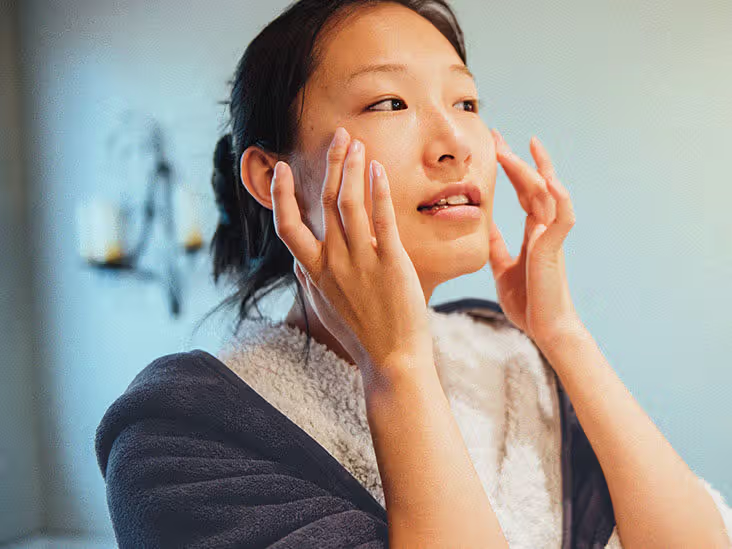Aging is a natural process that affects every part of our bodies, and one of the most visible aspects of aging is the skin. As we age, the skin undergoes structural and functional changes, driven by both intrinsic factors like genetics and extrinsic factors such as UV exposure, lifestyle, and environmental pollutants. Understanding how the skin ages on a biological level can help us make informed choices about skincare and anti-aging treatments.
In this article, we’ll explore the science behind skin aging, the key changes that occur over time, and some effective methods for maintaining healthy, youthful skin.
The Structure of Skin: Layers and Their Functions
The skin is the body’s largest organ and is composed of three main layers: the epidermis, dermis, and subcutaneous tissue.
- Epidermis: The outermost layer, which acts as a protective barrier. It contains cells like keratinocytes and melanocytes that protect against environmental damage, UV radiation, and infection. This layer constantly renews itself by shedding old cells and generating new ones.
- Dermis: Beneath the epidermis lies the dermis, which contains collagen and elastin fibers responsible for skin’s elasticity and firmness. This layer also houses blood vessels, nerve endings, and sweat glands that support skin health and function.
- Subcutaneous Tissue: The deepest layer, primarily composed of fat cells, helps cushion and insulate the body. It also provides structural support for the upper layers of skin.
As we age, each of these layers experiences gradual changes that contribute to visible signs of aging like wrinkles, sagging, and loss of radiance.
How Skin Changes Over Time
Decrease in Collagen Production
One of the most significant changes in aging skin is a decline in collagen production. Collagen is a protein that gives skin its structure, firmness, and elasticity. By the age of 20, our bodies start producing 1% less collagen each year, which accelerates in our 30s and 40s. This reduction leads to thinner skin, making it more prone to wrinkles, sagging, and fine lines.
Loss of Elastin
Alongside collagen, elastin fibers in the dermis help skin retain its shape after stretching. As we age, these fibers break down, leading to skin that appears less “bouncy” and more prone to sagging. The gradual loss of elastin, combined with reduced collagen, results in reduced skin elasticity, a hallmark of aging skin.
Reduced Cell Turnover
In youthful skin, the epidermis constantly regenerates, replacing dead cells with new ones approximately every 28 days. However, as we age, this cell turnover rate slows significantly, sometimes doubling or even tripling in older age. This causes dead skin cells to accumulate on the surface, leading to dullness, rough texture, and uneven skin tone.
Decrease in Natural Moisture Levels
The skin naturally produces oils and moisture to maintain its barrier and hydration. However, aging reduces the skin’s ability to retain moisture. A decline in natural lipids and reduced sebum production leads to drier, more fragile skin. This lack of hydration exacerbates the appearance of fine lines and wrinkles.
Damage from Environmental Factors
External factors, such as UV exposure, pollution, and lifestyle choices, play a significant role in accelerating the aging process. UV radiation, in particular, is known to cause photodamage, breaking down collagen and elastin fibers, leading to premature wrinkles and sunspots. Environmental pollutants contribute to oxidative stress on the skin, causing inflammation and cellular damage.
Treatments to Combat Aging Skin
While aging is inevitable, there are effective methods to minimize and manage its visible effects. A consistent skincare routine combined with advanced treatments can help improve skin appearance and health.
Topical Treatments and Skincare
Retinoids, antioxidants, and moisturizers are common anti-aging ingredients that work to protect, hydrate, and support collagen production. Vitamin C, for example, is a potent antioxidant that brightens skin and defends against free radicals, while hyaluronic acid helps lock in moisture, keeping skin plump and hydrated.
Non-Invasive Treatments
For those looking to rejuvenate aging skin, non-invasive procedures can provide significant results with minimal downtime. Treatments like traitement IPL Clinique Anti Aging (IPL, or Intense Pulsed Light) target pigmentation issues, reduce sunspots, and improve overall skin tone. This procedure works by using pulses of light to target melanin and vascular lesions, promoting a clearer and more even complexion. Additionally, IPL can stimulate collagen production, addressing some of the structural concerns associated with aging.
Microneedling and Chemical Peels
Microneedling and chemical peels are other popular treatments that encourage cell turnover and collagen production. Microneedling involves creating tiny punctures in the skin to trigger a healing response, leading to smoother, firmer skin over time. Chemical peels, on the other hand, remove the outermost layers of dead skin, allowing for the regeneration of fresh, new skin cells.
Lifestyle Adjustments
A balanced diet rich in antioxidants, regular hydration, sufficient sleep, and sun protection can significantly slow down the aging process. Using a broad-spectrum sunscreen daily is one of the most effective ways to protect the skin from UV damage and prevent premature aging.
Conclusion
Aging is a complex, natural process that affects skin structure and function on multiple levels. Changes like reduced collagen, slower cell turnover, and moisture loss lead to visible signs of aging such as wrinkles, dullness, and sagging. By understanding these changes, we can make informed decisions about skincare and treatments, like traitement IPL Clinique Anti Aging, to manage the effects of aging. With the right combination of treatments, products, and lifestyle choices, it is possible to maintain healthier, youthful-looking skin even as we age.

